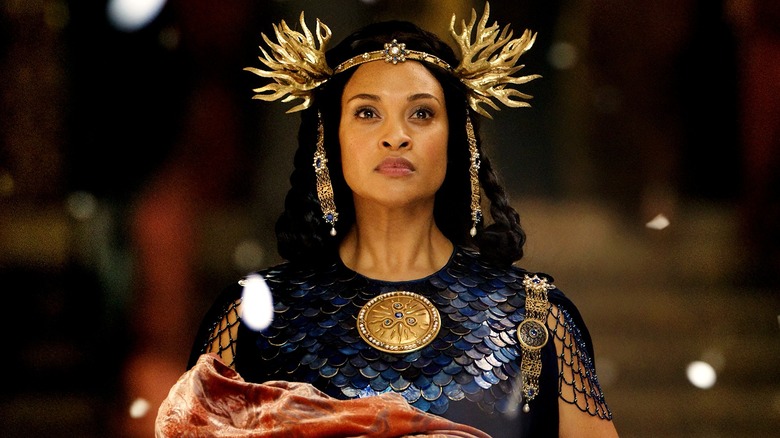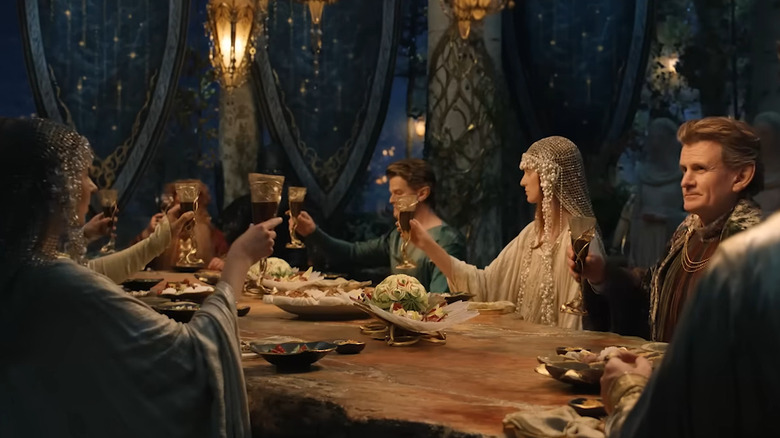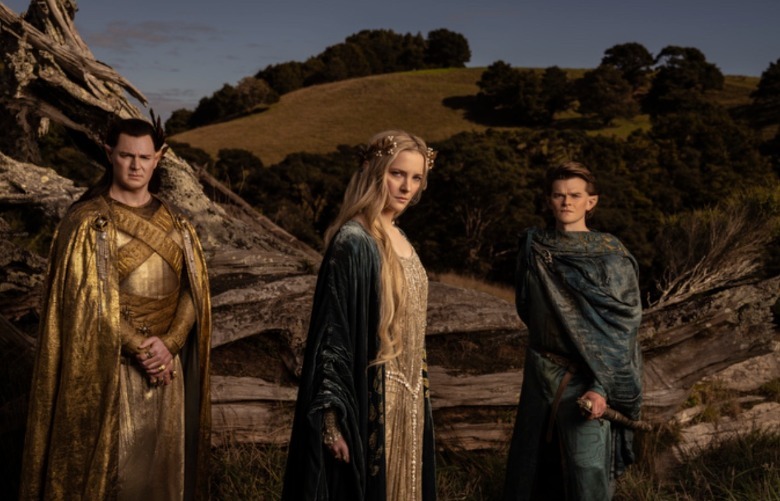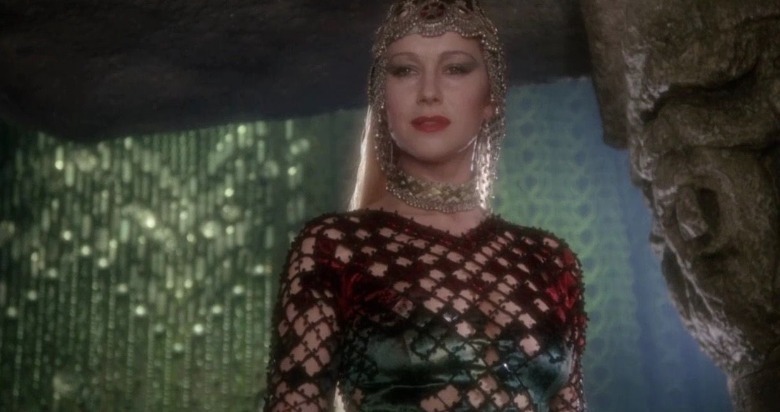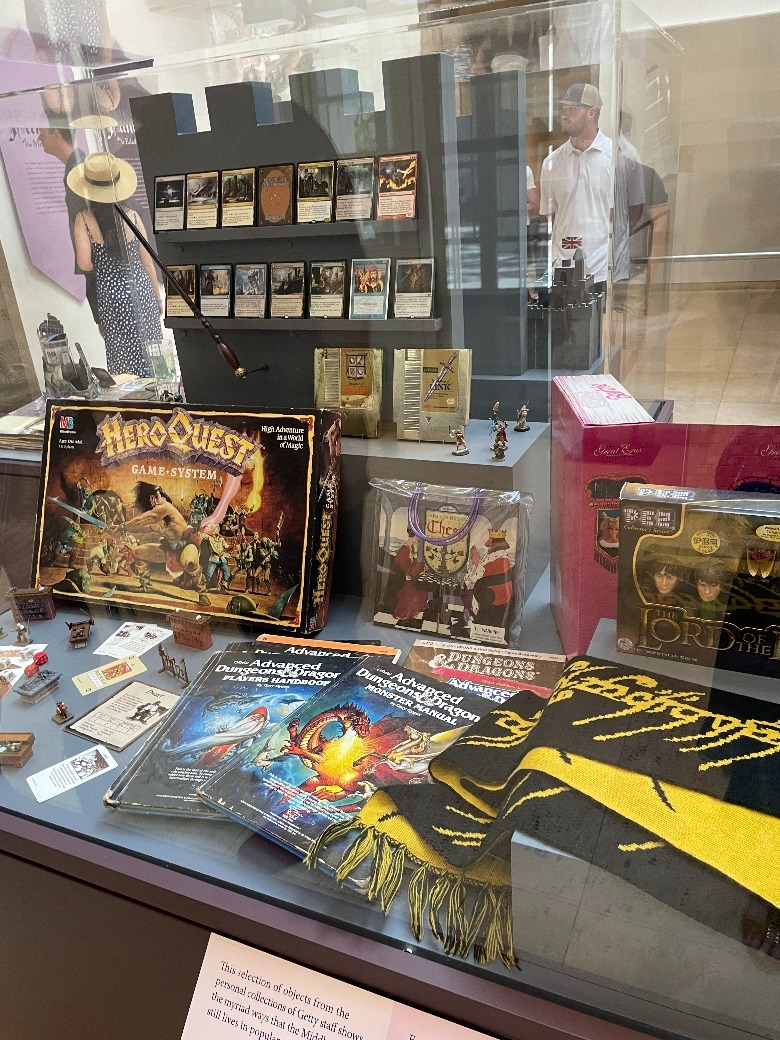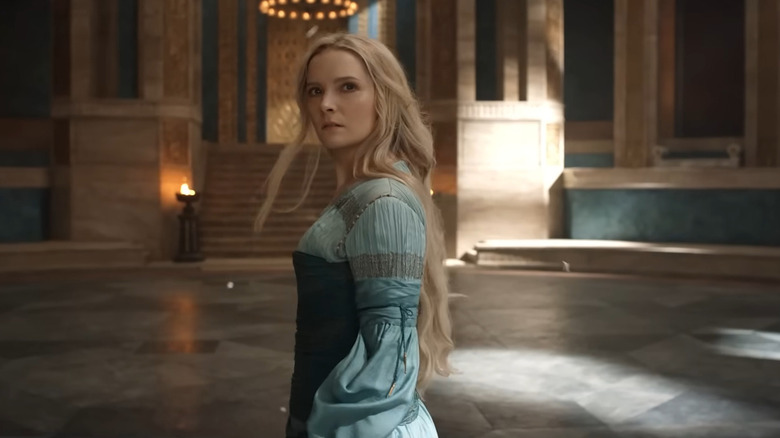The Classic Art That May Have Inspired The Costume Design On The Rings Of Power
"The Lord of the Rings: The Rings of Power" is halfway through season 1, so I'm going to take a moment to praise the incredible costumes of characters like Míriel (Cynthia Addai-Robinson), Galadriel (Morfydd Clark), and Disa (Sophia Nomvete and the MVP of the series).
I'm not alone in this admiration. Tweets and other posts on social media have compared some of the costumes to paintings from the Pre-Raphaelite, Orientalist, and Symbolist movements in art history. Twitter user @LeoPrasidis compared Galadriel's golden leaf crown to the one in Léon François Comerre's "The Girl with the Golden Wreath," Míriel's hair net to Herbert Gustave Schmalz's "Zenobia's Last Look Upon Palmyra," and Galadriel's armor to Joan of Arc paintings from John Everett Millais, and Charles-Amable Lenoir.
Two more beautiful The Rings of Power visual references to 19th century art. This time, it's Galadriel next to Leon Francois Comerre's The Girl with the Golden Wreath (1900), and MÃriel next to Herbert Gustave Schmalz's Zenobia's Last Look Upon Palmyra (1888). #TheRingsOfPower pic.twitter.com/i2x7aOYnpu
— Theo Prasidis 😈 (@TheoPrasidis) September 15, 2022
I love how The Rings of Power creators looked back at my favorite art period, i.e. the 19th century, for their visual references. Here, the Galadriel of our hearts opposite Joan of Arc by John Everett Millais and Charles-Amable Lenoir respectively. 💛#TheRingsOfPower pic.twitter.com/deUuysDnSK
— Theo Prasidis 😈 (@TheoPrasidis) September 7, 2022
Twitter user @ElusiveJ notes that Disa's grey and gold dress is reminiscent of Gustav Klimt's "Medicine."
I keep coming back to look at Disa. I'm getting these Klimt vibes so hard from this whole costume design and I love it so much!!! pic.twitter.com/w0ErEz6PcQ
— Juliette (@ElusiveJ) February 10, 2022
It's something I've also noticed, which may be because I have an apartment full of Pre-Raphaelite art prints.
Many of these art movements are focused on the use of intense color, with subjects from mythology and fairytales. The subjects of the art are often queens, magic beings, and other idealized women. There are goddesses, witches, femme fatales, rulers, and women who bestow favors (read: luck and good fortune) on medieval knights.
Even the extensive use of the color blue on Galadriel and Míriel is a classic signifier of how special they are. Blue pigment made from semiprecious lapis lazuli stones was costly throughout history, so blues and purples were used to draw the eye and indicate a special or royal person. This can most famously be seen in the use of blue pigments for the Virgin Mary's clothes in religious paintings.
Our idea of the medieval world
J.R.R. Tolkien drew from many influences when writing "The Lord of the Rings," including Arthurian legend, and that influence shines through in "The Rings of Power." If you look at "The Arming and Departure of the Knights" from the Holy Grail tapestries, commissioned in 1890, Guinevere and the other ladies of the court have the same draped fabrics on the women that we see on Galadriel after her armor is removed for the journey to Valinor, and in the publicity still below.
Many of the art movements the costumes draw from, like "The Lord of the Rings" itself, were inspired by folk legends and mythology. A whole lot of high fantasy is. The scene of elves and dwarves feasting pictures above is reminiscent of paintings of the court of King Arthur, and of other modern adaptations of Arthurian tales. The feast scene in the 1981 film "Excalibur" and the costumes of Morgana Le Fay (Helen Mirren) remind one not just of the elven clothes in "The Rings of Power," but also of the headdresses that Míriel wears.
The aesthetic of the Middle Ages and the focus on fantastical elements in its art have been popular in many ages since, and the different eras each put their own stamp on it. A recent exhibit at the Getty Museum in Los Angeles, California, not only featured the art and illuminated manuscripts from the time period, but also a whole section dedicated to what has been influenced by it — including a copy of Tolkien's translation of "Sir Gawain and the Green Knight." There were items from "The Lord of the Rings," "Dungeons & Dragons," Disney's "Sleeping Beauty," shows like "Cursed," and movies like "First Knight."
Copies of copies
Cultures around the world have been influenced by the aesthetics of the Middle Ages, and now we're — odd as this sounds — being influenced by the people who were influenced in different time periods. The Zenobia painting that brings to mind Míriel's headdress comes from a painter influenced by Pre-Raphaelites, who were themselves influenced by earlier art. They added a more realistic and detailed (if idealized as far as the time period in England) look, of course. The history of art has built on the originals, then built again on the copies.
In the companion book from the Getty exhibit, "The Fantasy of the Middle Ages: An Epic Journey Through Imaginary Medieval Worlds" by Larissa Grollemond and Bryan C. Keene, we can get a sense of this. Timothy Potts, the Maria Hummer-Tuttle and Robert Tuttle Director at the J. Paul Getty Museum, writes:
The history and culture of the Middle Ages have long been a source of fascination and imaginative (re)creation by later generations, from the Gothic Revival in nineteenth-century architecture to the nostalgic idealization of Disney's 'Sleeping Beauty' (1959) and the brutal intrigues portrayed in the recent television series "Game of Thrones."
Such tropes, however, despite their insistently visual representations, are largely based not on medieval reality but on fantastical reimaginings of the period.
What we see with "The Rings of Power" costumes are a fantasy, based on earlier fantasies of the Middle Ages. It's glorious in the most meta way. Costume designer Kate Hawley (who also worked on "The Hobbit" trilogy) has outdone herself. I cannot wait to see more.
"The Lord of the Rings: The Rings of Power" is currently streaming on Prime Video, with new episodes released every Friday.
